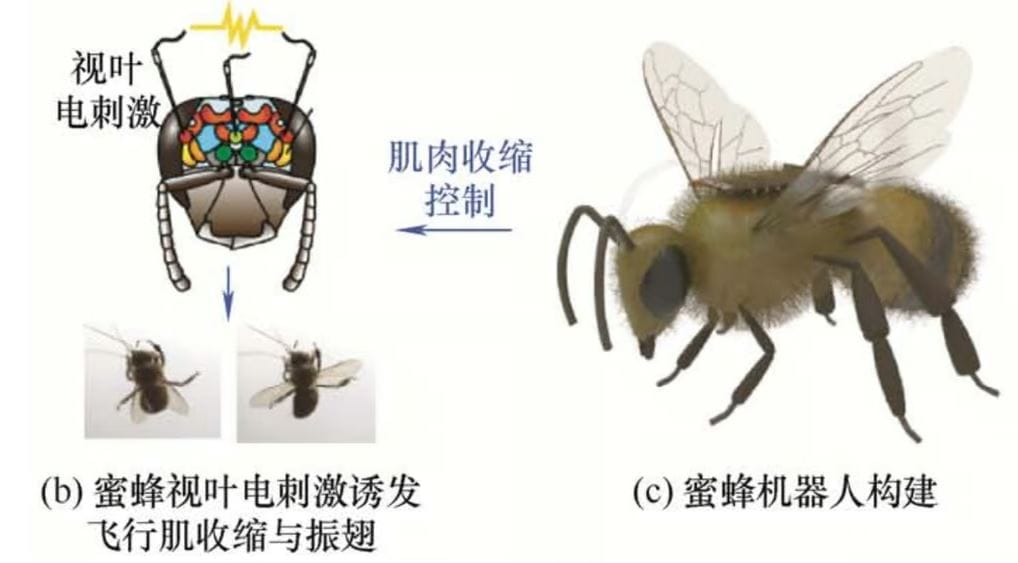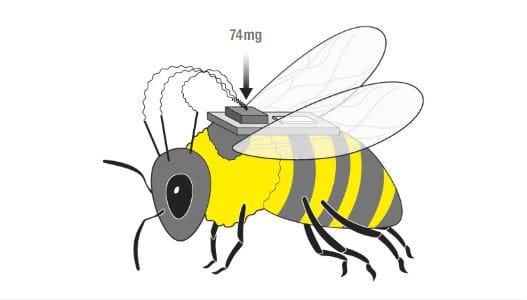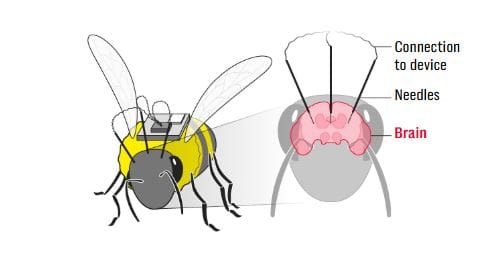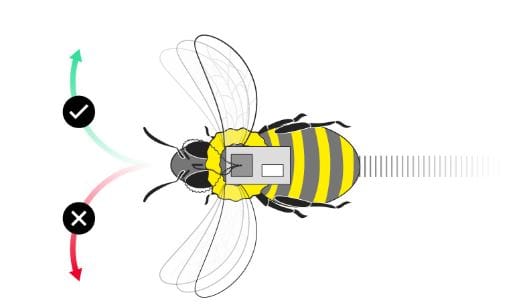Scientists Successfully Steer Live Bees With Brain Implants in Breakthrough Cyborg Tech

Scientists in China are turning bees into “cyborgs” by putting tiny brain controllers inside them. These devices let the scientists control where the bees fly.
These part-insect, part-machine bees might be used in the military or to help find people after disasters like earthquakes.
Professor Zhao Jieliang, who works at the Beijing Institute of Technology, and his team created the world’s smallest brain controller. It weighs only 74 milligrams—less than a pinch of salt.
The controller is strapped onto a worker bee’s back. It has three tiny needles that go into the bee’s brain to tell it where to fly.
How the bee brain controller works



Professor Zhao’s tests showed the controller worked 9 out of 10 times, and the bees followed the commands.
The scientists think that “cyborg bees” could be used for secret missions or in places that are too dangerous or hard for humans to reach.
The tiny devices can carry cameras, microphones, and sensors to collect and send back information. Because bees are small, they could sneak through tight spaces without being noticed. That’s useful for military or security tasks.
“Insect-based robots inherit the superior mobility, camouflage capabilities and environmental adaptability of their biological hosts,” Professor Zhao and his team wrote in their paper, published in the Chinese Journal of Mechanical Engineering on June 11.
“Compared to synthetic alternatives, they demonstrate enhanced stealth and extended operational endurance, making them invaluable for covert reconnaissance in scenarios such as urban combat, counterterrorism and narcotics interdiction, as well as critical disaster relief operations,” they wrote.
Other reports have shown scientists using bugs like beetles in similar ways. They added small chips and wires to the beetles and controlled them using infrared or Bluetooth signals.
One of the beetle “backpacks” weighed only 23 milligrams—about one-third the weight of the cyborg bee’s device.
Scientists in Singapore have also made their own mini cyborg controllers, but those were larger and heavier. They were attached to cockroaches that helped with search and rescue after Myanmar’s 7.7-magnitude earthquake in March.
Other countries, like the U.S. and Japan, are also working on their own versions of cyborg insects.
Even though Professor Zhao’s team has made a lot of progress, there are still problems to solve. For example, the batteries in the devices don’t last long. But if the batteries were bigger, they’d be too heavy for the bees to carry.
Also, the same device doesn’t work on every insect. Each type of insect reacts to signals in different parts of its body.
China is also trying to make other small machines. In June, they showed off mosquito-sized drones as part of their mini technology development.





